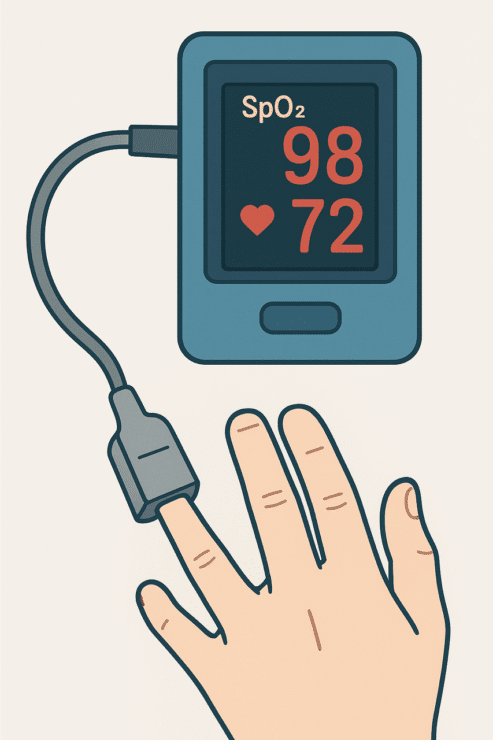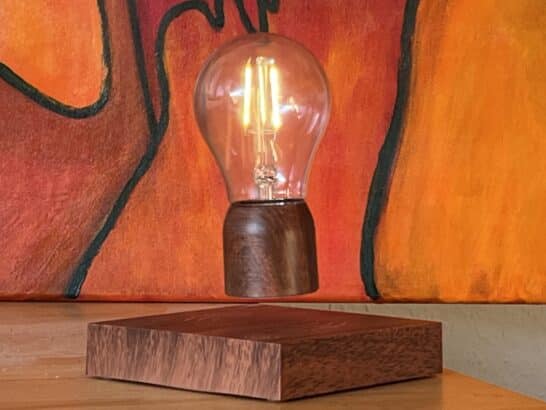The word apnea comes from Greek apnoia, which means non-breathing. Apnea is therefore a stoppage of breathing. This stoppage of breathing can last just a few seconds up to a few minutes and can lead to a shortage of oxygen in the blood. If interruptions occur predominantly during sleep, this is known as sleep apnea.
The Situation With PCH2 Children
Children with PCH2 usually have breathing problems, including apnea, from an early age. Apnea usually occurs at night.
There used to be somewhat frequent reports of children with PCH2 dying inexplicably in their sleep. It is not clear whether apnea was always the cause of these deaths. Nevertheless, many children are now monitored at night using a pulse oximeter, which measures the pulse and oxygen saturation, triggering an alarm in case of irregularities. For this reason, nocturnal deaths with unclear causes fortunately rarely factor into recent studies. The respiratory situation worsens during periods of heavy mucus production or acute upper respiratory tract infections. Inhalations, suitable medication for colds or the suctioning of mucus may provide relief.
Tips to Try Out
- If (sleep) apnea occurs or is suspected, set up nocturnal monitoring using a pulse oximeter in consultation with the attending physicians.
- CAVE: simple pulse oximeters are usually sufficient. More complex devices, such as those that also record an ECG, lead to frequent false alarms and can therefore significantly disturb people’s sleep.
- Try out different sleeping positions (e.g. slightly elevating the upper body).
- Consult your pediatrician whether it is advisable to have oxygen and suction equipment on hand for emergencies and to be instructed in their use.
Scientific Background
Natural History Study from 2014
Apnea occurred in 22 of 33 children, mainly at night. The frequency was usually 2-4 times per night, although in individual cases up to 20 episodes of apnea per night were reported. In 5 cases, the apnea improved with increasing age. A total of 13 children were monitored at night using a pulse oximeter. Of the children with apnea, 3 received oxygen as needed, 5 had a tracheostomy, and in 2 cases, treatment attempts with caffeine citrate or formoterol were effective in acute situations.
Natural History Study from 2023
Apnea occurred in 46 of 65 children, on average for the first time at the age of eleven months. The apnea also occurred mainly at night; only five children had episodes of apnea exclusively during the day. In seven children, the apnea ceased (on average at the age of 13 months). The apnea was caused mainly by seizures, mechanical obstruction of the airways, or an impaired respiratory drive. However, in many cases, no cause could be identified.
13 children were given oxygen (5 daily, 8 only in case of infection) and 8 children were treated with home respiration (7 only during sleep, 1 child continuously). Five children underwent tracheostomy during the last year. 25 of 52 children had a pulse oximeter or home monitor, which were mostly used at least once a week.
This entry was written to the best of our knowledge based on the reported experiences of parents of affected children. In addition, currently available data from the 2014 and 2023 Natural History Studies of PCH2 and from general medical literature has been included. It is not a substitute for consulting a medical professional. PCH2cure assumes no liability in this respect.
- Natural History Study from 2014: Frölich S. Natürlicher Verlauf der Pontocerebellären Hypoplasie Typ 2 [Dissertation to Acquire the Academic Degree Doctor of Medicine] Tübingen: Eberhard-Karls-Universität; 2014
- Natural History Study from 2023: Kuhn A L. Gastrointestinale Symptome, Ernährung und Gedeihen bei Pontocerebellärer Hypoplasie Typ 2 A [Dissertation to Acquire the Academic Degree Doctor of Medicine] Freiburg im Breisgau: Albert-Ludwigs-Universität; 2023

